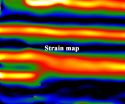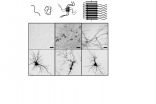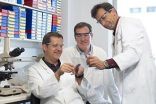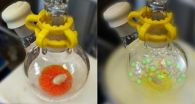(Press-News.org) Materials – Vehicle Lightweighting ...
For about the price of leather seats, automakers can trim approximately 362 pounds off the body and chassis of a midsize passenger vehicle, according to an Oak Ridge National Laboratory study. Researchers analyzed an array of materials – carbon fiber, advanced high-strength steel, aluminum alloys, magnesium alloys – that could replace steel. While the carbon fiber composite option reduced weight by 35 percent at an additional cost of $1,317, a combination of advanced high-strength steel and alloys resulted in a 25 percent weight reduction for only $81 more. Still, for achieving weight reductions of more than 25 percent, carbon fiber composites hold the most potential, according to Dave Warren of ORNL's Sustainable Transportation Program. Through the lab's Carbon Fiber Technology Facility, ORNL researchers are developing methods to scale up new production technologies and materials and bring fiber costs down. [Contact: Ron Walli, (865) 576-0226; wallira@ornl.gov]
Cyber – Protection for Utilities . . .
Hackers hoping to disrupt the power grid, water or natural gas service may be foiled by an intrusion detection system developed by researchers at Oak Ridge National Laboratory. The system is an expanded version of Oak Ridge Cyber Analytics, which boosts the performance of existing cyber attack systems by filtering noise and quickly making sense of massive amounts of data. The system uses machine learning, a branch of artificial intelligence, to classify critical infrastructure communications as malicious or benign and discriminate man-made from natural events. "With this approach we can trigger alarms to operators if there is something attacking the network systems," said Raymond Borges, one of the developers. Within a few years, Borges and colleagues plan to combine data from other sources—such as physical device logs – on the network to improve the detection rate. [Contact: Ron Walli, (865) 576-0226; wallira@ornl.gov]
Automobiles – Particulate Matter Paradox ...
Cars with gasoline direct-injected engines are helping automakers meet stricter government fuel economy standards, but they're emitting five to 10 times more particulate matter than their port fuel-injected counterparts. This is the finding of researchers in Oak Ridge National Laboratory's Fuels, Engines and Emissions Research Center. GDI engines inject fuel directly into the cylinder, increasing efficiency and compatibility with turbocharging, which allows drivers to have more power with smaller, lighter engines. "The tradeoff is higher particulate matter emissions," said ORNL's John Storey, who led the research team. Researchers also reported that particulate matter from GDI engines, expected to have more than 50 percent of the market share by 2017, is smaller and more varied in particle size than that of diesel particulate matter. The smaller particles contain more elemental carbon than diesel particulate matter and because of their size can penetrate deeper into the lungs, creating the potential for greater health risks. The ORNL team is examining approaches to mitigate particulate matter with fuels, combustion and emissions controls. [Contact: Ron Walli, (865) 576-0226; wallira@ornl.gov]
Energy – Super Smart Sensors ...
A new generation of low-cost, low-power wireless sensors being developed at Oak Ridge National Laboratory will be put to the test at the lab's new flexible research platform, which is part of the Maximum Building Energy Efficiency Research Laboratory. These potentially peel-and-stick sensors, necessary for optimal control of lighting and heating/cooling systems, would provide significant savings from energy efficiency improvements, according to Teja Kuruganti, one of the developers. Ultimately, because of the new platform, they could be manufactured at a fraction of the cost of traditional sensors, which cost $150-$300. And because the sensors are wireless and inexpensive, existing buildings could easily be retrofitted. When commercialized, the sensors and control systems could reduce energy consumption of buildings by up to 40 percent. [Contact: Ron Walli, (865) 576-0226; wallira@ornl.gov]
INFORMATION:
To arrange for an interview with a researcher, please contact the Communications staff member identified at the end of each tip. For more information on ORNL and its research and development activities, please refer to one of our media contacts. If you have a general media-related question or comment, you can send it to news@ornl.gov.
Pity the poor lithium ion. Drawn relentlessly by its electrical charge, it surges from anode to cathode and back again, shouldering its way through an elaborate molecular obstacle course. This journey is essential to powering everything from cell phones to cordless power tools. Yet, no one really understands what goes on at the atomic scale as lithium ion batteries are used and recharged, over and over again.
Michigan Technological University researcher Reza Shahbazian-Yassar has made it his business to better map the ion's long, strange trip—and perhaps make it smoother ...
People who are unable to button up their jacket or who find it difficult to insert a key in lock suffer from a condition known as apraxia. This means that their motor skills have been impaired – as a result of a stroke, for instance. Scientists in Munich have now examined the parts of the brain that are responsible for planning and executing complex actions. They discovered that there is a specific network in the brain for using tools. Their findings have been published in the Journal of Neuroscience.
Researchers from Technische Universität München (TUM) and the Klinikum ...
Researchers have discovered a new type of brain activity that underlies the timing of voluntary actions, allowing them to forecast when a spontaneous decision will occur more than a second in advance. 'Experiments like this have been used to argue that free will is an illusion, but we think that this interpretation is mistaken,' says Zachary Mainen, a neuroscientist at the Champalimaud Centre for the Unknown, in Lisbon, Portugal, who led the research, published on Sept. 28, 2014, in the journal Nature Neuroscience.
The scientists used recordings of neurons in an area ...
The peptide —a small protein— beta-amyloid is strongly associated with Alzheimer's disease; however, researchers are still looking for unequivocal proof that this peptide is the causal agent of the onset and development of the disease. The main obstacle impeding such confirmation is that beta-amyloid is not harmful when found in isolation but only when it aggregates, that is when it self-assembles to form the so-called amyloid fibrils
"We are not dealing with a single target, beta-amyloid alone, but with multiple ones because each aggregate of peptide, which can go from ...
Current changes in the ocean around Antarctica are disturbingly close to conditions 14,000 years ago that new research shows may have led to the rapid melting of Antarctic ice and an abrupt 3-4 metre rise in global sea level.
The research published in Nature Communications found that in the past, when ocean temperatures around Antarctica became more layered - with a warm layer of water below a cold surface layer - ice sheets and glaciers melted much faster than when the cool and warm layers mixed more easily.
This defined layering of temperatures is exactly what is ...
An international team of scientists has shown that more than 80 per cent of bowel cancers could be treated with existing drugs.
The study found that medicines called 'JAK inhibitors' halted tumour growth in bowel cancers with a genetic mutation that is present in more than 80 per cent of bowel cancers. Multiple JAK inhibitors are currently used, or are in clinical trials, for diseases including rheumatoid arthritis, psoriasis, blood cancers and myeloproliferative disorders.
Bowel cancer is the second-most common cancer in Australia with nearly 17,000 people diagnosed ...
DURHAM, N.C. -- A Duke University team has found that nanoparticles called single-walled carbon nanotubes accumulate quickly in the bottom sediments of an experimental wetland setting, an action they say could indirectly damage the aquatic food chain.
The results indicate little risk to humans ingesting the particles through drinking water, say scientists at Duke's Center for the Environmental Implications of Nanotechnology (CEINT). But the researchers warn that, based on their previous research, the tendency for the nanotubes to accumulate in sediment could indirectly ...
Computer modelling of the human eye, the brain of a rat and a robot could revolutionise advances in neuroscience and new technology, says a QUT leading robotics researcher.
Dr Michael Milford from QUT's Science and Engineering Faculty says the new study uses new computer algorithms to enable robots to navigate intelligently, unrestricted by high-density buildings or tunnels.
"This is a very Frankenstein type of project," Dr Milford said.
"It's putting two halves of a thing together because we're taking the eyes of a human and linking them up with the brain of a rat.
"A ...
An international group of researchers led by Dr. Warren E. Piers (University of Calgary) and Dr. Heikki M. Tuononen (University of Jyväskylä) has been able to isolate and characterize an important chemical intermediate whose existence has, so far, only been inferred from indirect experimental evidence.
Chemical reactions rarely go from starting materials to final products in one single step, but instead they progress through a number of intermediates. In many cases the intermediates are not stable enough to be studied by conventional characterization methods, which thwarts ...
Philadelphia, PA, October 1, 2014 – Patients with increased inflammation, including those receiving cytokines for medical treatment, have a greatly increased risk of depression. For example, a 6-month treatment course of interferon-alpha therapy for chronic hepatitis C virus infection causes depression in approximately 30% of patients.
Omega-3 fatty acids, more commonly known as fish oil, have a long list of health benefits, including lowering the risk of heart disease and reducing triglyceride levels. These nutritional compounds are also known to have anti-depressant ...





